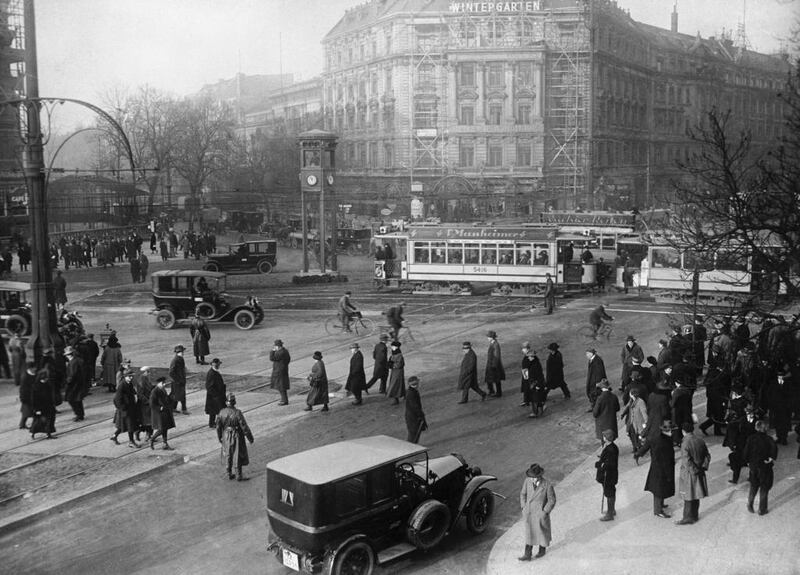Sabahattin Ali led a short but eventful life. Regarded by many as the father of modernist Turkish literature, Ali was also a teacher, translator and journalist. His left-leaning newspaper, Marco Pasa, became a target of government censorship in the 1940s due to its satirical editorials. Ali also sailed too close to the wind and was imprisoned twice for criticising president Kemal Atatürk's policies in print.
When Ali attempted to leave Turkey in 1948 he was killed on the Bulgarian border, most probably by the intelligence services. Where he is buried remains a mystery.
Five years before his death, Ali wrote a short, magical novel called Madonna in a Fur Coat about a Turkish man who falls in love with an artist in 1920s Berlin. The book struck a chord with Turkish readers and writers and became a publishing phenomenon. It sold a quarter of a million copies last year alone.
More than 70 years on from its original release, Ali's novel is now available in English for the first time, joining another Turkish bestseller, Ahmet Hamdi Tanpinar's The Time Regulation Institute, also winningly translated by Maureen Freely and Alexander Dawe, as a Penguin Modern Classic. It fully deserves both that status and a wider readership.
Ali introduces a young unemployed man who, after being discouraged from “empty pursuits like literature”, starts a job as an office clerk in Ankara. Gradually, he becomes acquainted with one of his colleagues, meek, sickly Raif Efendi, who is browbeaten at work and ridiculed at home, and is consequently “too timid ever to explore his soul, let alone express it”.
Our narrator earns his trust – so much so that when Raif is on his deathbed he gives him a private notebook containing a record of the most important events of his life, and asks him to burn it.
But instead of destroying it, the narrator reads it. In doing so, Ali’s novel changes shape and emerges as a frame narrative. The story we were reading is revealed as a subordinate lead-in to a main one, the narrator a mere warm-up to the headline act.
Raif takes centre stage to recount at length what happened to his younger, more idealistic self 15 years ago. Perhaps, he writes, “by wandering through those years, by occupying them fully, the terrors and the trivial detail, I can set myself free.”
His tale begins with him moving from his rural village at the end of the First World War and going nowhere in Istanbul. His father gives him direction, telling him he should move to Berlin and learn the soap trade. Raif, who has so far only encountered Europe in books, jumps at the chance. He finds a pension, takes German lessons, and sees the sights – including an art gallery, in which he becomes entranced by, then obsessed with, a female self-portrait which is “a swirling blend of all the women I had ever imagined”.
In the novel’s only blip, which resorts to coincidence and reduces Berlin to a village, Raif spots the source of his infatuation on the street one day. The real-life fur-clad Madonna is Maria, a half-Jewish German artist, who takes Raif under her wing and all over the city, to cafes and cabarets, exhibitions and museums. Their friendship develops, with one lonely soul finding intimacy in the other, but to Raif’s regret Maria keeps relations platonic. When love does finally appear it is followed by illness, loss and a bitter surprise for both Raif and the reader.
Madonna in a Fur Coat sparkles thanks to its main characters. Raif is a shy dreamer, "a captive of the make-believe", who has never had an "adventure" with a woman and is adrift in a foreign land. Maria is a bold, independent modern woman with fixed ideas and strong opinions. The two come alive during their immersive discussions on art and love, and on their tours of the city.
Like Christopher Isherwood, Ali offsets inter-war Berlin’s decadent dazzle with bouts of shade, murk and melancholy. Raif scans a gaudy nightclub and ruefully declares that “Nothing grieves me more than seeing someone who has given up on the world being forced to smile.”
Ali recreates a vanished era and dramatises a doomed relationship, and does so with verve, depth and poignancy. The result is a miniature masterpiece.
Malcolm Forbes is a freelance writer based in Edinburgh and a regular contributor to The Review.





